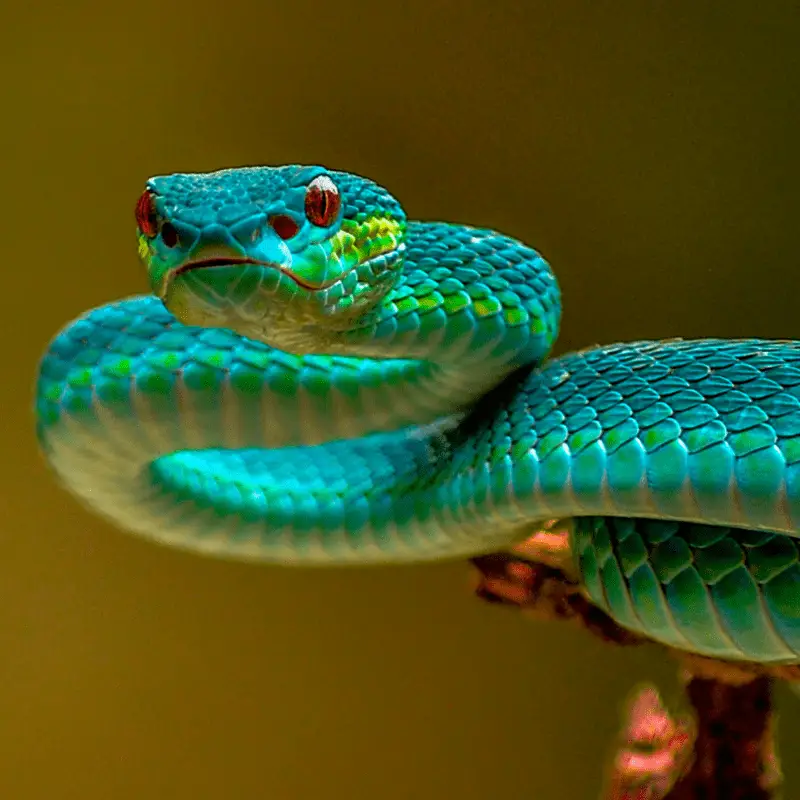It is hard to find anyone who loves the sight of a snake in the wild. However, when it comes to pet snakes, the owners shower love and care for them as much as possible. Most people get fooled by their looks and often think that snakes do not suffer from health issues. That is not true. Like any other pets, the snakes are equally vulnerable to different diseases. So, like any other pets, you need to keep an eye on your pet snake’s health conditions. So, what kind of diseases a snake suffers from? Do they contract rabies?
Snakes do not contract rabies. Rabies is mainly a mammal specific disease. The rabies virus attacks the nervous system of the animals by binding with the mammal p75 neurotrophin receptor. It is one of the most conservative types of protein that only mammals have in their bodies. As the snakes do not possess this protein, they cannot contract the disease or spread it.
Not only the snakes, other reptiles, insects and even birds do not contract this disease. While rabies is mainly a disease of the animals, it can transmit from the animals to a person.
How is rabies spread?
The rabies virus lives in the saliva of the infected animals. That means this disease spreads when the rabid animal bites a person or another animal. The rabies virus seeps through the wound and attacks the nervous system of the infected animals. The disease can also spread if the infected animals’ saliva gets into the eyes, mouth, nose or open wound of another animal or person.
Common diseases of pet snakes
Now that it is clear that snakes do not suffer from rabies, you need to shift your attention to other diseases of snakes. Here are descriptions of some of the most common diseases from which pet snakes suffer the most. Keep on reading to know more about these health issues.
Mouth Rot
Also known as infectious stomatitis, mouth rot is one of the most common problems of pet snakes. From the name itself, you can understand that the problem occurs in the mouths of the snakes. It starts as pinpoint haemorrhages on the gums of your pet snake. You can also notice blood-stained mucus or pus oozing from the mouth of your snake. In severe cases, the snake starts to breathe with its mouth wide open. If you notice this behaviour in your snake, make sure to take it to the vet immediately.
The irony is, mouth rot is often not a primary disease. It appears as a secondary disease thanks to some injury on the mouth of the snake. Mouth rot can also occur due to improper diet, humidity and temperature regulation related issues or even overcrowding.
External and Internal Parasites
Parasites live inside and outside of the pet snake’s body is common. Most of the time, it is hard to detect any signs of parasitic attacks on pet snakes. Only during the annual faecal check and the physical examinations you can find out about them. However, an excessive infestation can cause breathing issues, diarrhoea, swelling of the internal organs, anaemia, skin irritation, mouth infections, and weight loss.
Skin Infection
It is yet another common problem found among pet snakes. This problem takes place when the snakes, or other reptiles for that matter, are kept in a too dry or moist environment for a long time.
If your snake is suffering from this issue, you may notice red-coloured inflamed blister-like lesions in the skin of your snake. These lesions can appear on the snakes’ underside, making it difficult for you to spot them.
If not treated, these fluid-filled patches can become infected and can cause severe damage to the skin of the snakes. In the worst-case scenario, it can lead to septicemia and even death.
Inclusion Body Diseases
It is one of the most severe diseases of boas and pythons. Most of the time, the pythons show the signs of this infection. But, the Boas can carry the virus without any symptoms.
The problem is, the signs of this disease vary a lot. Even though this disease is mostly associated with the nervous system, it often causes problems in the digestive tract and the affected snake’s respiratory system. In the worst cases, the affected snakes cannot right themselves when put on their backs. They can appear star gazing and might even get paralyzed. The IBD is a lethal infectious disease and can spread from one snake to the next.
Respiratory Infections
Most of the respiratory infections of the snakes are bacteria related and often appears along with stomatitis. Snakes suffering from respiratory illnesses can have nasal discharge and excess mucus in their mouths. Lethargy, wheezing, loss of appetite and open mouth breathing are some apparent signs of respiratory infections.
Septicaemia
It is one of the illnesses in which the toxins produced by the bacteria proliferate into the snakes’ organs and bloodstream. Most of the time, affected snakes are in near-death condition or at least critically ill. Open-mouth breathing, loss of appetite and the discolouration of the scales are some common signs of septicemia. If you suspect this issue, contact your vet right away.
How to tell if your snake is sick
When it comes to snakes, particular symptoms appear for specific diseases. For example, if your snake is suffering from stomatitis, you will notice a thick discharge in its mouth. Saying that loss of appetite and significant energy loss is the common factors that indicate your snake is unwell. Keep an eye on your pet snakes, and contact your vet if your notice even the slightest changes.
Recommended reading:
Conclusion
Like all animals, snakes also suffer from different kinds of zoonotic diseases. These illnesses can appear due to parasitic, bacterial or fungal attack. You can, of course, detect that your snake is not well if you know how it usually behaves. Do not hesitate to contact your vet if you suspect anything is amiss with your pet snake.

